A Complete Namibian Safari
Trip highlights
- Set off on private tours over the dunes of the Namib
- Explore Damaraland and Etosha National Park
- Enjoy a Walvis Bay Sea and Dolphin cruise
- Explore Swakopmund and Windhoek on city tours
Bespoke safaris with Jacada
We design one-of-a-kind journeys incorporating luxury in all its forms. Our bespoke luxury safaris in Namibia include:
- Exclusive luxury safari lodges, camps and hotels
- Curated and private experiences
- Skilled guides and local wildlife experts
- Decades of combined safari expertise from our team
- Full support from your concierge in Africa

- Days 1–2 Windhoek
- Days 2–4 Sossusvlei
- Days 4–6 Swakopmund
- Days 6–8 Damaraland
- Days 8–10 Etosha
- Days 1–2 Windhoek
- Days 2–4 Sossusvlei
- Days 4–6 Swakopmund
- Days 6–8 Damaraland
- Days 8–10 Etosha
Itinerary in detail
Every Jacada trip is tailored to your personal preferences and interests. Below you’ll find a sample itinerary to inspire your own custom-designed journey.
Overnight in Windhoek
Windhoek is one of the smallest capital cities in the world with a population of just 234,000, but it is home to some fascinating buildings with typical German architecture. You could also visit the National Botanical Gardens featuring mountain aloes, a large evergreen succulent with a dense rosette of fleshy, green leaves and striking orange flowers.

Where you could stay
Windhoek
Overview
Your home before you venture off into the barren and beautiful Namibian Desert, this stylish boutique hotel is hidden away in the Eastern corner of Namibia’s capital and only proclaimed city, Windhoek.
The city itself is the seat of the country’s cultural and administrative powers but despite this, it remains one of the smallest capitals in the world with just 250,000 residents. The Olive reflects Windhoek’s small size, providing a cosy but luxurious bolt-hole with great access to the surrounding wilderness.
Reminders of the prevalent Namibian culture are spread throughout the hotel as the modern is combined with the traditional. Rough-hewn wooden benches sit on plush carpets around sculpted granite coffee tables, animal-skin rugs lay beneath large beds covered in crisp white cotton and wide glass doors lead out onto your personal terrace for a view across the small city.
→ Find out moreWindhoek
Overview
Housed in a turreted castle built by Count Schwerin for his fiancee and with fabulous views over Windhoek, this Relais & Chateaux property is hands down the most luxurious place to stay in the capital city.
The sixteen rooms are contemporary and chic with a traditional twist, very well-equipped and highly comfortable. A quiet sanctuary in the midst of the city, the hotel’s gardens and pool are a joy to relax in and a nearby golf course means getting in a couple of holes before your flight home or a good way to begin your trip, is pleasingly straightforward.
A fantastic restaurant and with tables set up on the wonderful terrace outside, means very few guests choose to dine out.
→ Find out moreTwo nights exploring the Namib Desert
The towering terracotta sand dunes and clay pans that belong to Sossusvlei form the signature landscape of Namibia. Located in the Namib-Naukluft National Park in the southern Namib Desert, this rippling sand-sea of huge dunes has been shaped by the winds and the underground Tsauchab River.
Enjoy your time in the world’s oldest desert with your guides taking you on walking safaris, scenic drives and perhaps a photography lesson or two. Your travel designer will be able to talk you through the various activities available depending on which accommodation you choose to stay at.

Where you could
Sossusvlei
Highlights
- Star-viewing skylights in each villa
- Swimming pool
- Observatory with professional astronomer
- Nature drives in 4x4 vehicles & Quadbiking
- Dune drives
- Stargazing
- Hot air balloon safaris
- Massages
Overview
Designed to capture the splendour and solitude of the desert, just ten stone and glass desert villas spread out along the curve of the escarpment allowing absolute privacy.
Each air-conditioned suite features a private veranda, split-level bedroom and living room with fireplace, en-suite glass-encased bathroom and outdoor shower. The villas are equipped with a stunning star-viewing skylight, discreet CD system, custom-stocked personal bar and compact spotting scope for magnificent star and game viewing. The guest area, where walls have become windows that fold away completely, boasts unimpeded desert vistas.
The split-level Lodge features a fire-lit bar, comfortable sitting room, swimming pool, wraparound verandas and a Safari Shop. A fine selection of wines from an impressive walk-in wine cellar complements delicious Pan African meals. Guests can escape the desert heat with a revitalizing midday dip in the pool fed by water from an underground spring. At sunset, animals are drawn to a nearby waterhole, enhancing desert sundowner drinks.
→ Find out moreSossusvlei
Highlights
- 23 canvas rooms with private roofdeck
- Traditional dinner under the stars
- Hot air balloon experiences above the sand dunes
- Bush lunch in a dry river bed
- Electric fatbike excursions
Overview
Located within the 37,000 hectare private Kulala Wilderness Reserve, this lodge enjoys convenient access via a private gate to the iconic red dunes of Sossusvlei.
Staying here is extremely comfortable, with 23 thatched and canvas “kulalas”, each on a raised platform to catch the cool desert breezes and with private rooftop decks should you want to spend the night under the spectacular star-filled skies. All are en suite, and solar powered heaters provide hot showers.
The main lodge is a clay construction with a North African inspired décor, and it’s here you enjoy the simple yet delicious meals in the spacious dining area followed by relaxing in the comfortable lounge. There is also an outdoor plunge pool and stargazing deck from which to enjoy the breathtaking scenery.
→ Find out more
The impact of your stay:
- Located amidst the desolate Sossusvlei dunes, Kulala Desert Lodge embarked on an ambitious endeavour: ecological restoration in a once arid land used for goat farming. The result is a transformed desert oasis, now thriving with life.
- In rural Namibia, environmental damage is frequently intertwined with poverty. To alleviate the strain on natural resources, Wilderness has established programmes for empowerment, enterprise, and skills training. These include initiatives such as small-scale farmer development, business training, mentorship, and school scholarships.
- Wilderness’s impact in Namibia spans a cumulative area of around 167,310 hectares. Operating under the Namibia Large Fauna Programme, they conduct continuous conservation initiatives for desert-adapted wildlife species, encompassing large predators like lions, leopards, brown and spotted hyenas, as well as desert-adapted elephants, black rhinos, giraffes and other ungulates.
Sossusvlei
Highlights
- Eleven self-contained villas, each with private pool
- Air conditioning
- Wine cellar
- Excursions to Sossusvlei
- Guided nature drives
- Hot air ballooning
- Stargazing
Overview
Offering more of a ‘boutique’ polish and size set in the 37,000- hectare private Kulala Wilderness Reserve, and a stone’s throw from the Sossusvlei dunes, this beautiful lodge is easily the most luxurious in the area.
Wilderness Little Kulala consists of 11 climate-controlled thatched suites, sympathetically designed so as to merge deceptively into the desert landscape. Each one is air conditioned with an en-suite bathroom, and has its own private outdoor pool and shower. The rooms are huge and with floor-to-ceiling windows designed to spoil you with the incredible views that flood in. Or take it a step further and star gaze in style on your own private rooftop.
The main lodge is built on three levels and provides an elegant entertainment area, with a spacious lounge, stylish dining area , well-stocked reference library and its own wine cellar to boot.
→ Find out more
The impact of your stay:
- In the desolate Sossusvlei dunes, Kulala Desert Lodge embraced the ambitious task of ecological restoration in a once arid land used for goat farming. The result is a transformed desert oasis, now brimming with life.
- In rural Namibia, environmental damage is frequently intertwined with poverty. To alleviate the strain on natural resources, Wilderness has established programs for empowerment, enterprise, and skills training. These include initiatives such as small-scale farmer development, business training, mentorship, and school scholarships.
- Wilderness’s impact in Namibia spans a cumulative area of approximately 167,310 hectares. Operating under the Namibia Large Fauna Programme, they engage in continuous conservation initiatives for desert-adapted wildlife species. This includes large predators such as lions, leopards, brown and spotted hyenas, as well as desert-adapted elephants, black rhinos, giraffes and other ungulates.
Explore the desert

A discovery of the Sossusvlei dunes
Embark on an excursion to the incredible Sossusvlei dunes, to admire the incredible views and experience the magical silence of the desert. Hike the high peaks, wander the petrified deserts, look out for desert wildlife and marvel at the other-wordly landscapes.
Two nights in Swakopmund
Enjoy some time exploring Swakopmund, a small German coastal resort situated between the desert and the sea. This charming town boasts a combination of German architecture, good hotels, shops, restaurants, museums, craft centres, galleries and cafés for you to enjoy. Alternatively you may like to partake in any of the adventure activities on offer including quad-biking in the dunes, sky diving and scenic flights, which your travel designer will be able to advise you about.

Explore the rugged coastline

The Walvis Bay sea and dolphin cruise
From Walvis Bay embark on a sea and dolphin cruise where you’ll spot Cape fur seals, Heaviside and bottlenose dolphins, pelicans, flamingos and a wide variety of other sea birds. Whales, leatherback turtles and sunfish also frequent these waters. In the afternoon explore Walvis Bay lagoon and the salt pans. The lagoon and surrounding wetlands are a RAMSAR wetland site of international importance and an important feeding area for many migratory birds: a prime location to spot coastal species.
Two nights exploring Damaraland
One of the most scenic parts of Namibia, with plenty of scope for adventure, Damaraland encompasses the expanses of rugged wilderness in Namibia’s northwest between the Skeleton Coast, Kaokoland and Etosha. It is home to very few people, wandering herds of desert-adapted elephants and black rhino. The plains are dotted with surreal rock formation decorated with ancient San rock art, petrified forests, the imposing Spitzkoppe mountain and the Brandberg Massif (Namibia’s highest mountain).
Though there are no national parks here but instead a collection of game reserves and concessions that house remote safari lodges. Here you can hope to spot wildlife including lions, cheetahs, giraffes and more in the captivating surrounds.

Where you could stay
Damaraland
Overview
This is one of Namibia’s finest camps, blending magnificent views, comfort and exclusivity.
Cradled in the Huab River Valley, Wilderness Damaraland Camp is set among desert plains, ancient valleys and the amazing Brandberg Mountains. All ten adobe-designed thatched units are en-suites with shower facilities and built-in fans.
Other facilities include a large viewing deck boasting magnificent views, a restaurant and bar area, swimming pool and outside boma, while their list of exciting activities is also impressive. During the day go on guided nature walks to sundowner drives, to tracking the rare desert-adapted elephant. As evening comes, dine on meals by lantern light followed by the staggering stargazing that Namibia has to offer.
→ Find out moreDamaraland
Highlights
- Eight Meru-style tents with views of the rocky plains
- Romantic poolside dinner
- Bush lunch
- A safari experience with meaningful impact on the conservation of black rhinos
Overview
You’ll find Wilderness Desert Rhino Camp in a wide valley, nestled amid the undulating hills of the 450 000-hectare Palmwag Concession. This tranquil area is recognised for its minimalist beauty and the large range of desert-adapted wildlife that call the area their home, most noticeably for its free-roaming black rhino population, the largest in Africa.
Lodging at the camp is divided between eight raised Meru-style canvas tents with front verandas that take in expansive landscape of the dramatic Etendeka Mountains and the plains scattered with euphorbia and ancient welwitschia plants. The tented dining and lounge areas have also been elevated to provide panoramic views during meal times and moments of relaxation. There’s also an attractive pool to cool off in and a fire pit for enjoying nights spent stargazing and swapping tales.
During your stay, you can take part in daily rhino tracking activities on foot and by vehicle and learn about the Save the Rhino Trust with whom the lodge collaborates.
→ Find out more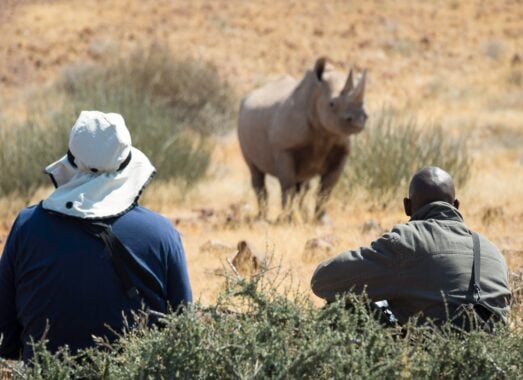
The impact of your stay:
- Wilderness has left an indelible impact in Namibia, spanning a cumulative area of approximately 1,673,100 hectares. Through the Namibia Large Fauna Programme, they actively spearhead ongoing conservation initiatives for desert-adapted wildlife species. This includes a focus on large predators such as lions, leopards, brown and spotted hyenas, as well as the desert-adapted elephant and black rhinos, giraffes, and other ungulates.
- Children in the Wilderness Namibia is a testament to Wilderness’s dedication to community engagement and education. This impactful program is designed to promote sustainable conservation through leadership development and education for children in Africa. The approach is diverse, ranging from hosting Eco-Club programs at local schools to organising annual camps for children within rural communities residing on the fringes of Africa’s wild areas.
- With camps strategically positioned across the continent, Wilderness has successfully conserved over 2.3 million hectares of land. Their ambitious goal is to expand this conservation effort to 5 million hectares by 2030, reflecting their steadfast commitment to preserving and protecting vast natural landscapes for future generations.
Damaraland
Overview
Grouped together like a typical African village in squeezed between huge rust-coloured boulders of the Twyfelfontein Conservancy, Mowani is an imaginative and sustainable eco-lodge with astonishing desert views.
Perfectly placed to explore the landscapes of southern Damaraland and the bushman rock art the area is famed for, not to mention the desert elephant and black rhino within the conservancy, Mowani conjures up a wild romance and ethnic tranquility in its setting and service. Four ‘View’ tents, eight standard ones, one luxury room and one suite (with private deck & private lounge area) give you a choice as to the type of traveller you are.
→ Find out moreDamaraland
Overview
Huddled among – and even built around – huge orange boulders of a rocky outcrop in the dry grasslands of the Aba Huab Valley, Kipwe is a gem of an eco-friendly camp.
There are nine dome shaped rooms at Camp Kipwe and one sprawling, thatched roof suite. Natural touches such as rocks embedded in the floor and animals carved into the wood, mimicking the area’s famous engravings, add to the unique sense of place, as do incredible views out across Damaraland.
Follow paths through the rocks to the heart of the camp – the communal lounge area and dining area with its expansive deck area and cool swimming pool where birds flock.
Explore the area in search of long wandering desert adapted elephant herds, hike along the river bed and marvel at the ancient rock carvings at Twyfelfontein, a UNESCO World Heritage Site where the oldest engravings might be as old as 10,000 years. Sustainable eco-tourism and community upliftment is of the utmost importance and local villagers can also give you a unique insight into life and traditions here.
→ Find out moreDamaraland
Overview
Boasting an incredible setting at the foothills of the immense Grootberg massif and amongst the ancient Etendeka lava flows of northern Damaraland, Etendeka Mountain Camp puts its emphasis on nature, and rightly so.
The eco-friendly camp uses solar power and features ten en-suite meru tents connected by pathways to the main dining tent. Modern amenities such as flush toilets, hot-and-cold running water, and a stunning open-air “bucket” shower will make your stay as luxurious as it’s possible to be while in the heart of the wilderness. You’ll enjoy simple but delicious meals, prepared on solar or on open fires and eaten under starry African skies.
You’ll spend your days here exploring the area by foot and in open game drive vehicles accompanied by exceptionally knowledgeable guides. Keep your eyes peeled for desert elephant and black rhino, cheetah, lion, zebra, and herds of oryx.
→ Find out moreDamaraland
Highlights
- 16 thatch suites with views over the desert
- Opprtunity to engage with the local Doro Nawas community
- A chance to spot black rhinos, elephants and other desert-adapted animals
- Sleep under one of the least polluted skies in the world
- Locally grown ingredients used in traditional recipes
- Sleep-out deck for incredible stargazing
Overview
Blending in with the surrounding rugged terrain, the thatched stone Wilderness Doro Nawas Camp is set atop a rocky mount in the dry and dramatic Aba-Huab River Valley. Taking full advantage of those sweeping Damaraland vistas, the main portion of the camp provides indoor and alfresco dining, a pool plus a flat roof for perfect sundowning and stargazing.
Meanwhile each of the sixteen open-plan chalets also enjoy fantastic views with their large glass doors opening out onto a verandah. Take in the awesome plains and Etendeka mountains from here and on warm evenings wheel your bed out for a magical night under the stars.
Head out into the diverse land on exploratory hikes and 4×4 drives in search of desert-adapted elephant, springbok and – if you’re lucky – the black rhino. The ancient Twyfelfontein San Rock art engravings are also nearby, while cultural visits provide an insight into the work undertaken by Doro Nawas to create economic empowerment for the local community.
→ Find out more
The impact of your stay:
- Wilderness has made a significant impact in Namibia, covering a cumulative area of approximately 1,673,100 hectares. Through the Namibia Large Fauna Programme, they actively engage in ongoing conservation initiatives for desert-adapted wildlife species, including large predators such as lions, leopards, brown and spotted hyenas, as well as the desert-adapted elephant and black rhinos, giraffes, and other ungulates.
- Doro Nawas operates under a joint venture conservancy lease scheme, marking the first of its kind in Namibia. These conservancies empower local communities by providing them with a stake in the ownership of the camps, along with receiving annual lease fees. Wilderness prioritises training and local hiring, further supporting these communities through employment opportunities.
- In a bid to reduce their environmental footprint and strengthen community ties, Doro Nawas incorporates a variety of traditional recipes and indigenous ingredients into their menu. This includes venison, dates, local spinach, and beans cooked on an open fire in the boma or served fresh from the BBQ, showcasing a commitment to sustainability and local culture.
Two nights by Etosha National Park
Etosha’s most distinguishing feature is its horizon-less silvery salt pan that covers 6,133 square kilometres, as well as the variety and concentration of game that crowd its surrounding spring-fed waterholes. Nicknamed the “Place of Mirages”, the terrain is extraordinary especially when a pride of lions, herds of blue wildebeest or desert elephants stand against this stark backdrop.
The remains of an ancient inland lake, the Etosha Pan, takes up about a quarter of the park’s land and there is a variety of habitats within the park’s borders from mopane woodland to treeless plains, open savannah, becoming more hilly the further west you go.

Where you could stay
Etosha National Park
Overview
Ongava Lodge is situated on the slopes of a rocky outcrop within Ongava Reserve and its surrounding scenery is astoundingly attractive with large open plains blending into Mopane tree woodlands and granite ridges.
14 rock-and-thatch en-suite chalets, one of which is a family suite with two bedrooms. The main lounge, dining and pool area is situated on the foothills of the Ondundozonanandana Range, overlooking a floodlit waterhole and a vast beautiful plain. You’ll be accommodated in luxury air-conditioned thatched chalets with private veranda, all with en-suite bathrooms.
This lovely property offers you the full Etosha experience whilst providing superb accommodation and service, as well as night drives and nature walks on the reserve.
→ Find out moreEtosha National Park
Overview
At the foot of one of Ongava Game Reserve’s dolomite hills, the Tented Camp sits immersed in mopane woodland that is rife with game and birdlife.
There are seven large, classic safari tents sat on decks with shaded verandas from which you can watch wandering antelope. Inside, you’ll find a large bed leading around to an en suite bathroom and an open-air shower. There is also a family suite consisting of two tents linked by a walkway that can sleep four people.
The main area, built of stone, canvas and thatch, fronts onto a busy waterhole where much of the reserves wildlife can be viewed while floating in the swimming pool.
Enjoy game drives and guided walks within the expansive reserve itself, a great place to spot both black and white rhino, or take excursions into the adjacent Etosha National Park to see it’s stunning salt pan.
→ Find out moreEtosha National Park
Overview
Wonderfully atmospheric and well set out, Mushara’s Bush Camp consists of sixteen standalone custom-made, en suite tents with their own verandas for optimal privacy and comfort.
With a very stylish, thatched palapa-style lodge at the camp’s heart for dining, lounging and possibly recounting your safari tales with other guests, not to mention a very good kid’s program, this is fantastic place for families wishing to explore Etosha.
→ Find out moreEtosha National Park
Overview
A modern, and certainly chic, option is Mushara’s Outpost property. Styled on an old farmhouse with a more minimalist take on the open plan safari lodge, the effect is elegantly up to date and sleek. Positioned along the ancient dry riverbed of the Omuramba, their sixteen standalone canvas and wood rooms are raised by stilts on individual wooden platforms for extra privacy and elevated views over the bush.
Spend friendly days and nights sitting around the campfire, talking with fellow guests over gourmet food, embarking on game drives to the park or simply soaking up the serenity of your surrounds.
→ Find out moreWhy book with Jacada

Personalised design
We’ll plan your trip around your personal interests, tastes and preferences, providing honest advice based on first-hand knowledge.

Authentic experiences
Our expert guides and brilliant Concierges are hand-picked for their ability to bring your destination to life with care and passion.

Positive Impact
We seek out unforgettable experiences that benefit both local communities and the environment.
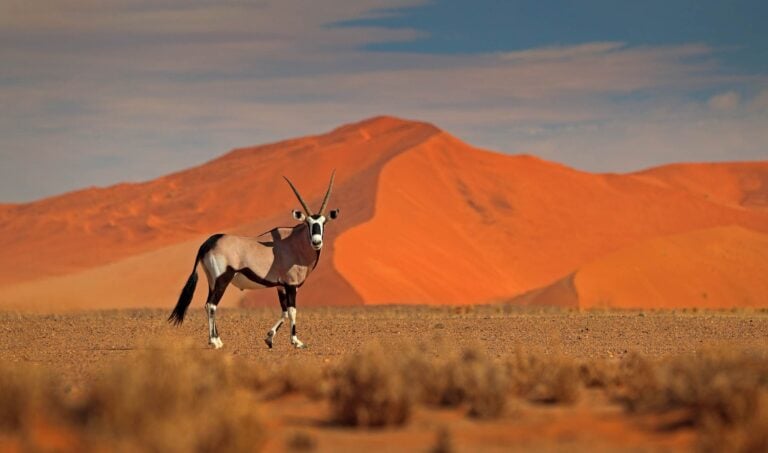


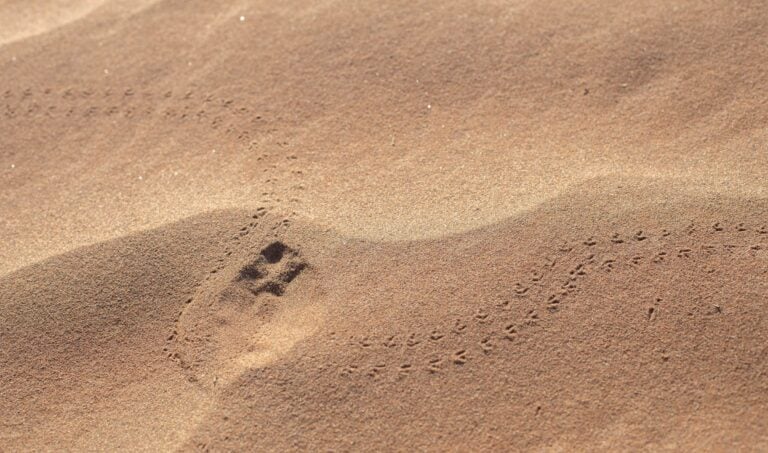









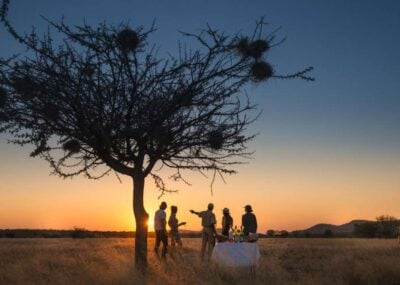






















_0-612x380.jpg)

-612x380.jpg)
































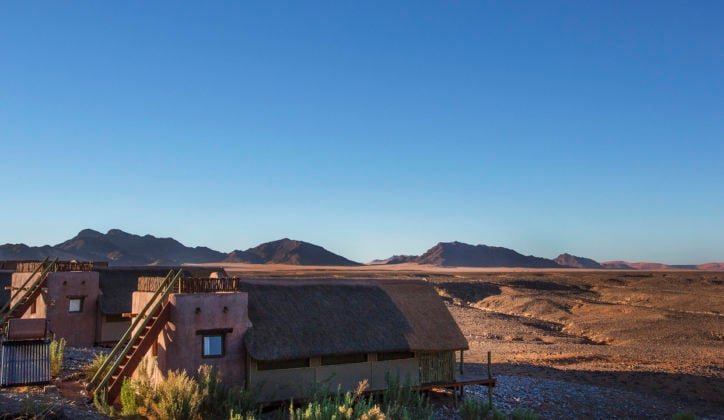








































































































































-612x380.jpg)















